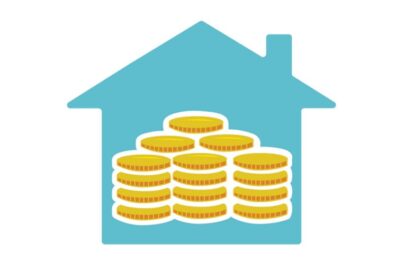July has seen the price of property coming to market hit a new record high for the second consecutive month, a 0.1% increase on June, according to Rightmove.
The average new seller asking price is now £294,542.
Miles Shipside, Rightmove director, said: “Another month, and another record high in the price of property coming to market. While the monthly increase is very modest, the same period a year ago saw a monthly fall of 0.6% which is more the norm given the onset of the summer holiday season. However, given the widely acknowledged supply crisis and a sharp drop in new seller numbers this month compared to this time last year, it is somewhat surprising that the rate of increase has slowed to such an extent.
“Recent government announcements including relaxing residential planning requirements on brownfield land are an important part of the mix in improving affordability if they follow through to cheaper land prices.”
The greatest gap between buyer enquiries and the number of properties available is for homes with fewer bedrooms. While different supply/demand dynamics will be at play in different parts of the country, the overall picture is that properties with two or fewer bedrooms have the highest number of enquiries per property. This large mismatch is in the typical first-time buyer sector (two bedrooms or fewer), with 24% more enquiries per property of this type than for larger properties with three or more bedrooms. They benefit from demand from not only first-time buyers, but also downsizers and buy-to-let investors.
Rightmove said the quandary for developers is how to deliver more homes into this sector when building larger homes may deliver greater profit margins and attract buyers with less stretched affordability.
Shipside said: “The greatest mismatch between demand and supply is at the lower end of the property ladder, as no doubt many buyers in this category would like to afford to buy a larger home, but have had to accept that it is out of their reach and downsize their aspirations to increase their chances of a successful purchase. The forthcoming extra tax burdens on buy-to-let investors may help to tip the balance in favour of first-time buyers, but the consequent drop in rental property supply could push up rents.
“More supply of affordable starter homes for the growing demand from both renters and buyers is required, which means more new build for both sectors to meet the country’s current and future housing needs. The challenge for government, planners and developers is how best to ensure the right properties are built in the right locations and at more affordable prices. This will however depend on addressing capacity constraints in the building industry, the price of land for housing, the consistency of funding for key players in the construction sector and the overall stability of the housing market and the wider economy.”
Demand remains high, with both visits to the Rightmove website and enquiries to estate agents up by 22% in June compared to the same period a year ago. In contrast the number of properties coming to market is running at a weekly run-rate 10.6% below the same period in 2014. The biggest drop-off in fresh supply is in the typical first-time buyer sector with two bedrooms or fewer, the sector where demand was already at its highest compared to available properties. The shortage of suitable property for sale highlights the need for an urgent and marked increase in the overall housing stock to help keep pace with the growth in household formation.
Rightmove said that with signs of buyers hitting their affordability ceilings, a substantial increase in suitable new build supply would help to alleviate upwards price pressure, although years of under investment will take years to rectify.
Shipside added: “Creating an environment where homes are more affordable requires long-term solutions. As prices increase, more and more buyers are reaching the upper limits of what they can afford or are allowed to borrow under newly restrictive mortgage lending criteria. Those assessing whether to sell and trade up are faced with a double whammy of curbs on their borrowing power and bigger price jumps to the next rung of the ladder. Improving affordability requires the creation of more homes of the right type and in the right place, resulting in increased churn and more pricing competition. The challenge is to identify what is in demand and in short supply and build more of it.”
Jeremy Duncombe, director of Legal & General Mortgage Club, said: “First-time buyers are taking the brunt of the consequences of the lack of housebuilding, according to today’s data. Younger people looking to get a foot on the ladder are facing fierce competition and this, along with the lack of supply, is driving up prices at a faster rate when compared to larger properties. This is likely to create longer rent tenures for younger generations, who may now need to postpone their dream of homeownership until later in life.
“Helping hand measures such as the Help to Buy ISA are welcome, but are likely to stimulate demand. Given that housebuilding is already well below where it needs to be, generating more demand in an already crowded market is likely to be counter-productive unless more homes are built to accommodate those looking to buy. The government needs to build around 250,000 more houses in order to keep up with the current level of demand, and it’s vital that they follow through with this so that a strong pipeline of new homes is in production for those who want to own their own home.”
